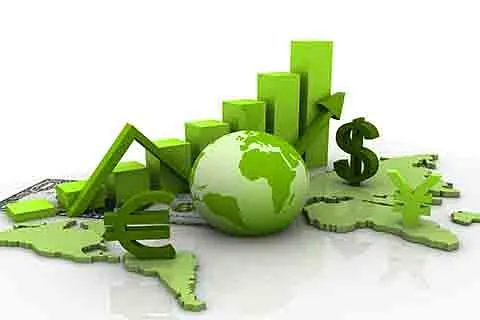The growth paradigm of Indian economy has progressed overtime. As the nation keeps on firming up its developmental strategies, weoutreach to various groups of policymakers and economist to assemble inputsthat could appraise its growth needs. Their perspectives are outlined below.
India economy is prone to boom and bust cycle: with the decrease in economic growth to 7.2 percent in the fiscal year 2018, rising unemployment and widening of current account deficit to 2.5 percent of GDP. Exports remain static and are viewed as the primary explanation behind low foreign earnings.
The two major shocks in the form of demonetisation and the GST had a serious impact on growth of India. This led three major bottlenecks, first is cracked infrastructure, second is jobless growth and third is rising of Non-performing Assets (NPA).
The present contribution of the travel industry to India economy is assessed at 9.2 percent of GDP and is anticipated to twofold increase in 2030. However, more measures are needed to improve tourism industry among states to make India attractive to foreign tourists and thereby generating more foreign exchange.
Youth (both male and female) are key drivers of balanced growth and development, however, neither one of the demographic is optimally employed. In India, we have 65 percent of the population below the age of 35 years. Unemployment in India does not reflect crisis, but it is a matter of serious concern.
There is no instant catastrophe of any sort close by. But there is a profoundly deceptive issue at work through contracting job opportunities, contracting formal employment, and shrinking human labour.
The government ought to have an internship program for them to get work exposure and skill development programs required by the market. Expertise training through government and private organizations will largely impact job creation.
An exclusively government-run program will undoubtedly fail except, if collaboration is done as a team with the business and industrial sectors.
However, women constitute 48.4 percent of the population, 33 percent in labour force participation which is lower than the global average of 50 percent.
Without empowering women’s, we can neither accomplish balanced economic growth neither improvement in human development. The government should maintain quota for women’s in employment (both in public and non-public) sectors and transport facilities to girls and women’s for mobility, besides protections against violence in the work environment.
The growth in urbanisation in India is fastest in South Asia. At present 34 percent of the population resides in the urban area with 3 percent annual growth rate, about half portion of the population will live in urban communities by 2025.
Urbanization offers vast opportunities for faster economic growth. For balanced growth, the government should also focus on other cities which remain underdeveloped. Increasing populations strain the infrastructure and services in the metropolis.
A broadened way to deal with urban development won’t just improve growth; it will also help in job creation, better health facilities and municipal services.
India has been ranked 14th most vulnerable country to the climate change based on Global Risk Index 2019. The average annual temperature increased by 0.75 degrees yearly over the past few decades.
The Prime Minister’s Council on Climate Change (PMCCC) in mid-2007 has increased investments in reducing the impacts of global climate change. India has developed the National Action Plan on Climate Change (NAPCC) in 2008.
Long term integrated approach is needed to implement the policy for accomplishing key objectives with regards to environmental change. These include National Water Mission, National Solar Mission, National Mission for Sustaining the Himalayan Ecosystem, National Mission for a Green India, National Mission for Sustainable Agriculture and National Mission on Strategic Knowledge for Climate Change.
The above list is not a comprehensive proposal. However, itis important to tackle the above problems and suggest the appropriate policyfor balanced economic growth, social and environmental development. These threepillars comprise an important screening structure for policymaking.
The author is a doctoral scholar and research fellow in theUnion Ministry of Commerce and Industry






